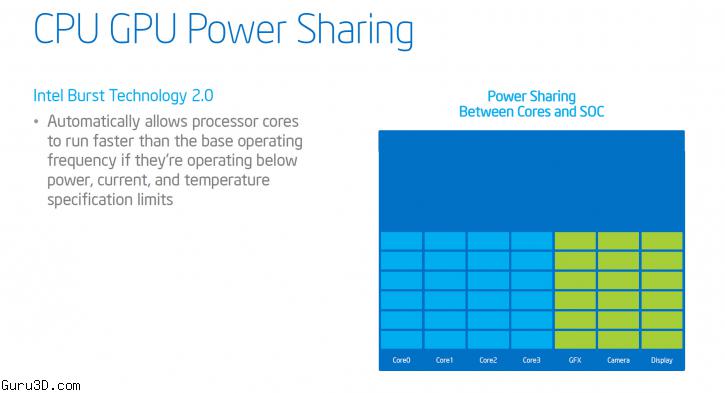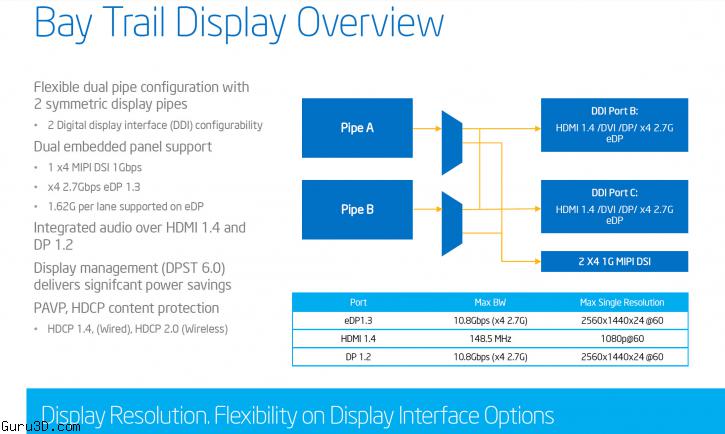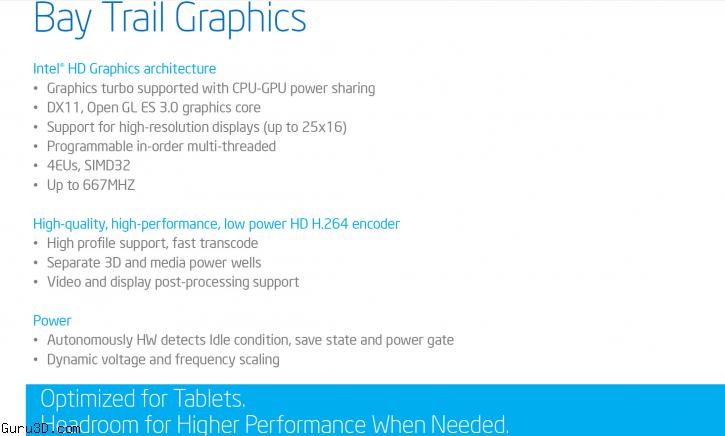Intel’s Silvermont architecture powered Atom Z3000 series or Bay Trail as it is formerly known is going to be unveiled on 11th September but Wccftech powsted details regarding the low power SOCs which would power the future generation of tablets and mobility devices.
I'll do a blunt CC here, and again the courtesy for this story goes to Wccftech :
It is no doubt that the mobile market has grown up tremendously in the recent year and consumers are leaning towards low-power, portable devices day after day. Intel has been gearing up its Atom lineup for years now and now plays a major role in mobility devices. The Intel Atom Z3000 series ‘Bay Trail’ SOCs would be powered by the latest 22nm Silvermont architecture which would also be featured in the company’s Avoton, Rangeley, Merrifield and a soon to be announced brand for various platforms. The Atom Z3000 ‘Bay Trail’ would end up in tablets and would feature enhanced performance over the past generation of Atom processors and current competitors.
The Atom Z3000 series would be split into two product segments, the Atom Z3700 series would be Quad Core variants targeted towards Windows and Android ecosystems while the Atom Z3600 Dual Core SOCs would be targeted towards the Android OS. There would be a total of six SKUs under the Atom Z3000 series which are listed below:
Intel Atom Z3000 SKUs Lineup:
| Atom Z3000 Series | Atom Z3770 | Atom Z3770D | Atom Z3740 | Atom Z3740D | Atom Z3680 | Atom Z3680D |
| Process | 22nm | 22nm | 22nm | 22nm | 22nm | 22nm |
| Cores | 4 | 4 | 4 | 4 | 2 | 2 |
| L2 Cache | 2 MB | 2MB | 2MB | 2MB | 1MB | 1MB |
| Frequency | 2.4 GHz | 2.4 GHz | 1.8 GHz | 1.8 GHz | 2.0 GHz | 2.0 GHz |
| Memory Technology | LPDDR3-1067 DC | DDR3L 1333 | LPDDR3 1067 | DDR3L 1333 | LPDDR3 1067 | DDR3L 1333 |
| Memory Bandwdith | 17.1 GB/s | 10.6 GB/s | 17.1 GB/s | 10.6 GB/s | 8.5 GB/s | 10.6 GB/s |
| Memory Capcity | 4 GB | 2 GB | 4 GB | 2 GB | 1 GB | 2 GB |
| Display Resolution | 2560×1600 | 1900×1200 | 2560×1600 | 1900×1200 | 1200×800 | 1900×1200 |
The Silvermont core itself features higher performance through out of order execution engine, a new multi-and system fabric architecture featuring new IA instructions on the level with Intel’s Westmere Core series and new security and visualization technologies. On the power side, the Silvermont would be highly efficient featuring wider dynamic operating range and enhanced active and idle power management. Not to mention the 22nm design itself which is built with the latest 3D Tri-gate transistors which is specifically tuned for SOC products.
The Atom Z3000 Series architecture is powered by the above mention Silvermont core, featuring support for LPDDR3-1067 and DDR3L-RS memory configurations, Intel HD Graphics with Clear Video HD Technology with 4 Execution Units or EUs with 8 threads each. The graphics processor would feature dynamic frequency mode adjusting the clock speeds from high to low depending on the usage and supporting max resolution of 2560×1600.
A single Bay Trail Atom Z3000 Series chip is going to offer Bluetooth, WiFi, GPS, 3G/LTE, PMIC, Sensor Hub, NFC, Audio Codec, Panel, HDMI, Front Camera, Rear Camera, Touch Controller, NDR Flash, eMMC, SD Card and USB 3.0/2.0.
Getting back to the graphics part, the Intel HD Graphics architecture featured on the Atom Z3000 series comes with 4 Execution Units, SIMD32 which are a DX11 and Open GL ES 3.0 compatible graphics core supporting ultra high resolutions and speeds of upto 667 MHz. On the media side, the new Bay Trail SOCs would feature full HW acceleration and support H.264, VC1, MPEG2, MVC, VP8, MPEF-4/H.263, MJPEG formats and also give out HDCP 1.4 and HDCP 2.1.
The power and clock management is handled by the latest Intel Burst Technology 2.0 which is similar to their Intel Turbo Boost 2.0. The tech allows processor cores to run faster than their base frequency if they are running below their power, current and temperature limits.
Finally the performance which detailed in the slides looks like an incremental improvement over the past Atom cores and also the current ARM based SOCs which include NVIDIA Tegra 4 with four Cortex A15 cores and Qualcomm’s Snarpdragon 800 featuring four Krait400 cores. In single and multi-threaded benchmarks, the Atom Z3770 is faster than both of the fastest ARM solutions currently available. The graphics performance also seems to be strong with 4.5 times the performance over the previous generation Atom Z2760 Clover Trail and twice the improvement over Quadcomm’s Snarpdragon S4 powered Dell XPS 10 and NVIDIA Tegra 3 powered Microsoft Surface RT in 3DMark Ice Storm benchmark.
The Atom Z3000 Series ‘Bay Trail’ SOCs would be officially launched on 11th September at IDF13 San Francisco. Moving into the future, Intel would release Cherry Trail powered by the Broadwell GPU architecture which means that in a year’s time, we would get around 50-70% performance improvement over Intel’s current Bay trail HD graphics while CPU side would be powered by the 14nm Airmont cores on both Cherry Trail and its successor Willow Trail.
Check the thumbnails.


.jpg)




.jpg)











